
|   |

|   |
Madras Music Academy Annual Dance Festival 2015: Jovial Juniors imitating idols - Veejay Sai e-mail: vs.veejaysai@gmail.com Photos: Thanthoni January 17, 2015 The 2015 Madras Music Academy dance festival was inaugurated on the 3rd of January. In his speech, the chief guest Mr. Masanori Nakano, the consul general of Japan in Chennai spoke of a few common threads that bind Tamil and Japanese culture. 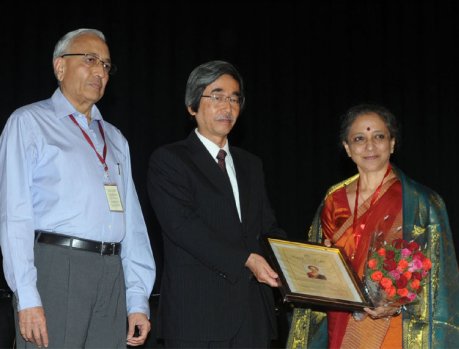 N Murali, Mr. Masanori Nakano, Leela Samson Bharatanatyam dancer Leela Samson received this year’s prestigious ‘Natya Kala Acharya’ title from the Academy. In her acceptance speech, Leela remarked how art was not the highest on our nation’s agenda and that it might never be. She called on private, individual and institutional patronage to encourage the growth of arts. Her thought-provoking speech can be read here.  Srinidhi Chidambaram This year’s academy festival opened with a solo performance by Srinidhi Chidambaram, a medical doctor by profession and dancer by passion. Being the first show also ensured a packed hall for her performance. Alas! If only Srinidhi could have encashed on the brilliant opportunity given to her and show her best! Like a sweet voice without any substance, Srinidhi prancing about the stage, trying hard as she might, couldn’t pull off a decent stage presence. In her presentation of the famous Tanjore Quartet varnam ‘Sakhiye inda velayil’ set to Ananda Bhairavi and adi talam, Srinidhi injected random poems from Divya Prabandhams, selections from Nachiyar Thirumozhi, Thiruppavai and what have you. Wasn’t the varnam substantial on its own that one needed to contaminate it with more and ruin the whole composition presented? One saw peacocks, cuckoos and anything on old McDonald’s farm dragged into the varnam. Bad footwork ensured running down the varnam further. A dead peacock, a tired cuckoo and a nayika panting for breath didn’t wake up Vishnu despite all the ‘Pallandu Pallandu’ he heard. One must know where to take creative license and include choreographic inputs. For all the patchwork she presented, Srinidhi might as well have made her own composition. She continued her performance with ‘The River That Was’, a tribute to the now defunct river Coovam. Swamimalai Suresh’s perfectly out of pitch singing, the poem by Vairamuthu attained a different level of boredom. As one rasika commented, “If she is so concerned about the river, why doesn’t she go clean it up instead of subjecting us to this?” Srinidhi’s was a brilliant opportunity lost. In a contrast on the second morning was Divya Devaguptapu’s performance. Divya has an excellent energy about herself and her dance. One wished she stopped grinning unnecessarily from ear to ear. In her presentation of Swati Thirunal’s varnam in ragam Saveri, Divya successfully shred the composition to bits putting in long jatis composed by KP Ramesh Babu. With no sense of proportion in the jatis, the entire varnam morphed beyond recognition. The same KP Ramesh Babu accompanied her on mridangam, constantly tuning it on stage. In the Kshetrayya padam that followed, Divya’s idea to choreograph the padam using a sequence of the nayika writing a letter to her lover was wonderfully portrayed. However, bereft of all shringaram, the padam remained high and dry. The only reason one could merit it was the melodious Kalyani played on flute by the talented JB Sruthi Sagar and violin by Easwar Ramakrishnan. 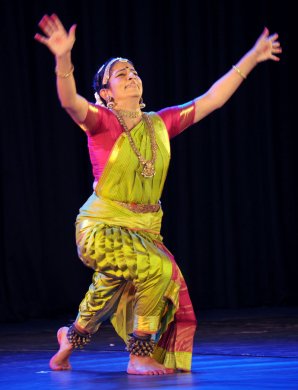 Divya Devaguptapu 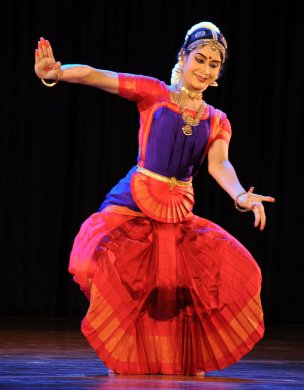 Aishwarya Narayanaswamy Aishwarya Narayanaswamy Balasubramanian’s performance on the third morning had a different hue. With a picture perfect alignment and anga shuddi, Aishwarya danced like a much-rehearsed doll. She presented Papanasam Sivan’s varnam ‘Nee indha mayam’ set to Dhanyasi ragam and adi talam. She took the whole of the first half of the varnam to warm up. One only saw a more energetic Aishwarya emerge by the second half. However in her sancharis, one wished Aishwarya worked on not leaving them incomplete. She began narrating Krishna’s leelas and left most of them unfinished. Was she in a hurry? Even in the sequence ‘Satyabhama Lola’, one couldn’t find the pride in the character that Satyabhama displays in Aishwarya’s dance. In Sarangapani’s famous padam ‘Chitike vesithe’ set to Kalyani, abhinayam took a backseat as the singer Hariprasad confidently sang with faulty pronunciation. Aishwarya, with an envious dancer-like figure can be an excellent dancer if she works on her abhinayam, which is weak and unconvincing at the moment. For now, she is yet to prove herself as a strong soloist. 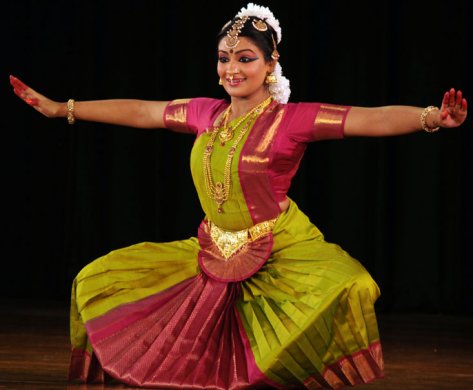 Jai Quehaeni A different liveliness on stage set sail with debutante Jai Quehaeni’s dance. A student of Guru Chitra Visweswaran, young Jai had a joyful stage presence from the word go. Her energy in the opening allaripu set to a mélange of three talams portrayed the innocence of a fresher. In the Vachaspati pada varnam where the nayika expresses her love for lord Vadivela to her sakhi, Jai’s attempt at abhinaya was more impressive than most established dancers who have been dancing for long. Even as Murali Parthasarathy kept mispronouncing ‘Velanidam Poyi Solladi’, completely changing the meaning and context of the song, Jai danced relentlessly with a smile on her face. If she can work a little more on her mukhajaabhinayam in addition to taking care of her physique, Jai is a star in the making. 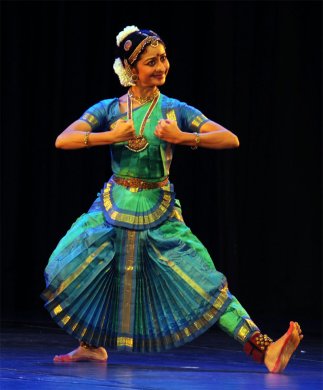 Sonali Skandan 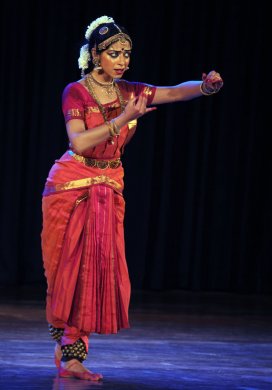 Apoorva Jayaraman Sonali Skandan, Apoorva Jayaraman and Deepa Raghavan’s performances didn’t evoke much beyond the mundane. Highly rehearsed in their attempts, they need to work more on bringing about naturalness to what they exhibit. Sonali’s energy only went up in the second half of her varnam even as she seemed highly distracted by god knows what! Her attempts at abhinaya in the ashtapadi ‘Yahi Madhava’ fell short. Dedicated dancers like Sonali must throw challenges at themselves to constantly excel rather than cater to performances. With a little more focus and involvement, Sonali is sure to do better. Apoorva Jayaraman’s performance didn’t meet any expected standards. Despite having an excellent orchestra to support her, Apoorva’s dance choreography remained at its pedestrian best. KP Nandini’s singing Surdas bhajan with strongly accented Hindi added confusion to her performance. Beyond ‘Choti, Moti and Roti’ aggressive Carnaticization of the said bhajan successfully blurred rest of the lyrics. Deepa stuck to a formula method but her choice to have two uncoordinated singers Roshini Ganesh and Randhini Aravind give her music ruined her show. The static expression on Deepa’s face did less to enhance the variety of items she presented though Subhasri Ravi’s excellent nattuvangam tried hard to break the monotony. The junior slots seemed satisfactory at the most with less to write home about. Veejay Sai is a writer, editor and culture critic. |